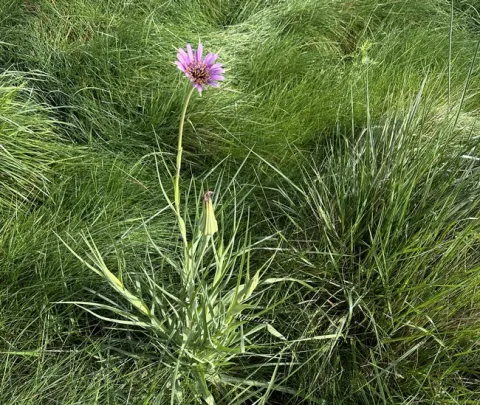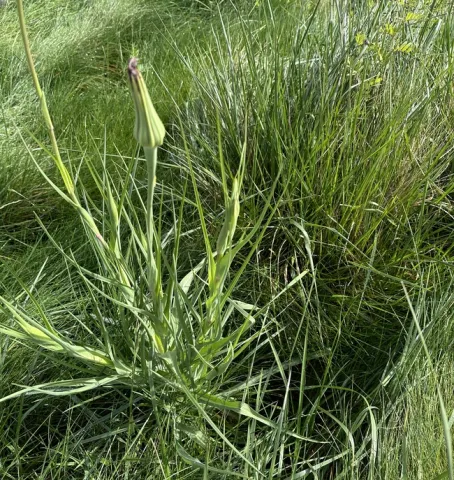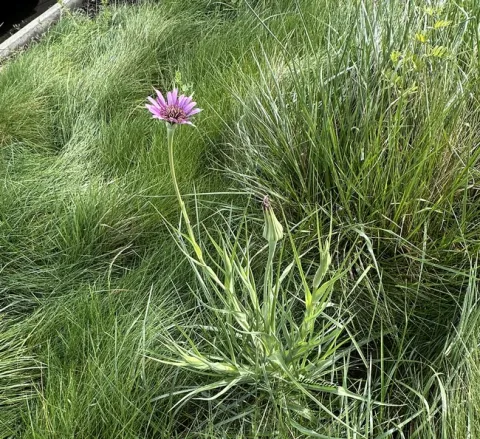Now is the time I dig out the Purple Goat's Beard. The ground is still wet, and the leaves are not too large yet. The Salsify plant somehow made it into my front yard garden. I originally thought it was lovely because I knew this plant was edible. After it bloomed, I knew that it was a terrific reseeding plant and not my garden. It initially came in on the wind from the puffball seed heads, which can travel hundreds of feet.
Most people consider this edible, biennial plant a broadleaf weed. But some foragers harvest wild plants. They eat them raw or make dishes using the roots or leaves. Other people grow large areas of these plants and cultivate them. NOTE: Please do not eat anything you haven't been identified by an expert.

This plant is part of the Asteraceae family and contains three Tragopogon species.
T. dubius, T. porrifolius and T. pratensis. ‘Tragos' means goat in Greek and ‘pogon' means beard. This plant originates from Eurasia and Northern Africa.
It has several common names: Purple Goat's Beard, because of the longer bracts that stick out along the flower petals and look like a goat's beard with purple petals; Oyster plant, because its roots are supposed to taste like oysters; Noon flower, because the blossoms open early at dawn and close at noon; Western Salsify, which has pale yellow flowers; and Meadow Salsify, which has bright yellow flowers.

Salsify starts with a basal rosette of gray-green, grass-like foliage. It has hollow, milky stems and a deep, 1 to 3-foot tap root. It will develop 5 to 6 flowers per plant and grow 2 to 4 feet tall.
The flower arrangement is solitary with an upright habit. The 3 to 4-inch, daisy-like flowers emerge from large, long, narrow pointed buds. Interestingly, these Asteraceae flowers do not have a center disk and only have ray florets. The Florets sit on top of a series of pointed bracts, which encase the flower and from the seed head when closed. So next time you find the Tragopogon plant in bloom, look closely at how the bracts emerge. Do they extend past the petals? Then it is the T. dubius species. If the bracts are equal to the petals in length, then it is the. pratensis. If the plant has a purple flower it is Tragopogon porrifolius.


